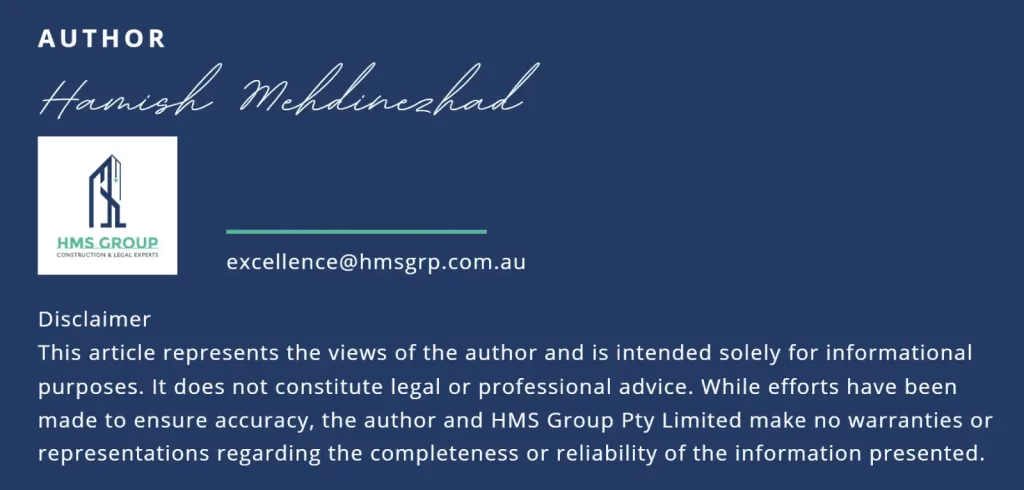In the realm of construction dispute resolution, the Scott Schedule remains a cornerstone document where numerous allegations of defective or incomplete work are made. Originating from judicial practice, it provides a structured, evidentiary mechanism to facilitate the comparison of positions between parties and the evaluation of those positions by decision-makers. This article examines the evidentiary character, procedural function, and professional conduct obligations associated with the preparation of Scott Schedules by expert witnesses.
-
Procedural Character and Jurisdictional Endorsement
The use of Scott Schedules has been judicially endorsed in multiple forums including the Supreme Courts of various states (particularly in the Construction and Technology Lists), NCAT, VCAT, QCAT, WASAT, District and County Courts, and the Federal Circuit and Family Court of Australia.
In Owners SP 62930 v Kell & Rigby Pty Ltd [2009] NSWSC 1342, the Honourable Justice Justice McDougall described the Scott Schedule as “a procedural and evidentiary device,” acknowledging its function in presenting itemised comparisons of claims, defences, and expert evidence. In doing so, His Honour affirmed its role in distilling complex factual disputes into manageable parts.
The NCAT Procedural Direction 3 – Expert Evidence provides explicit direction on the format and utility of Scott Schedules, confirming their purpose as tools that assist tribunal members to engage with discrete factual issues and reconcile competing expert views.
-
Structure, Clarity, and Forensic Function
A typical Scott Schedule adopts the following column format:
| Item | Description | Applicant’s Position | Respondent’s Reply | Expert Opinion | Estimated Cost | Decision Maker’s Comment/Determination
Best practice requires:
- Numerical consistency with pleadings, defect lists, or site inspection reports;
- Cross-referencing of evidence, including contract clauses, photographs, standards (e.g., AS 1684 or AS 3740), and contemporaneous documents;
- Segregation of scope, quality, and quantum issues;
- Statements of whether works are complete, incomplete, or defective.
In the context of Thiess Pty Ltd v Dobbins Contracting Pty Ltd [2016] NSWSC 265, the Honourable Justice McDougall stated:
“The opinion of the expert must be derived from specialised knowledge applied to the assumed or observed facts. The methodology must be consistent across all items unless justifiably varied.”
This principle affirms the importance of internal consistency within the Scott Schedule, underpinned by rigorous and transparent reasoning.
-
Language, Tone, and the Obligation of Independence
Expert commentary must avoid advocacy. As Dal Pont notes:
“The expert must not descend into advocacy. Neutral and traceable language is both a professional obligation and a safeguard against impeachment.” (Lawyers’ Professional Responsibility, 7th ed, 2021).
Appropriate phrasing includes:
- “In my opinion, based on the site inspection and review of contract documentation…”
- “This item is excluded from the contractual scope and is not defective.”
In Cross on Evidence (11th ed, 2017) at [29080], the Honourable Justice Heydon warns:
“A failure to properly document and explain your reasoning process may render your opinion inadmissible or diminish its weight in the eyes of the tribunal.”
-
Evidentiary Integrity and Disclosure Obligations
The preparation of a Scott Schedule involves evidentiary consequences. Where it forms part of an expert’s report or joint statement, it is subject to disclosure obligations under procedural rules. Version control is critical. Any change in position must be recorded, justified, and disclosed.
Experts must preserve the independence of their assessments. The improper influence of instructing parties risks not only professional sanction but the exclusion or diminished weight of their evidence.
-
Expert Conclaves and the Joint Schedule
Where a conclave is directed (e.g., under NCAT PD3 or court order), the Scott Schedule often serves as the foundation of the joint report. Experts must:
- Retain the agreed column structure;
- Insert a “Joint Expert Position” column;
- Record each point of agreement or divergence, with brief reasons;
- Confirm that all entries reflect their independent view.
As the Honourable Justice Dalton observed in Landel Pty Ltd v Insurance Australia Ltd [2021] QSC 247:
“It is permissible for matters of substance to be drawn to an expert’s attention in conference with lawyers, and remedied if the expert is able and willing to do so. Coaching is not permitted, and drafts will be disclosable.”
-
Educational Reference: NCAT Scott Schedule Template
For guidance on structure and content expectations, experts may refer to the NCAT sample Scott Schedule (Defective Workmanship), publicly available at:
👉 https://ncat.nsw.gov.au/documents/forms/ccd_form_scott_schedule_defective_workmanship.pdf
Disclaimer: This template is for educational purposes. Always refer to the applicable tribunal’s procedural requirements.
Conclusion
The Scott Schedule is not an administrative artefact – it is a forensic instrument. Prepared correctly, it illuminates disputed issues, clarifies competing evidence, and demonstrates expert integrity. It demands the same level of care, transparency, and independence as any formal expert report.
Where tribunal or judicial officers rely upon expert assistance, the clarity and credibility of a well-prepared Scott Schedule may significantly influence outcomes. It is the duty of the expert to ensure that influence is deserved.
Hamish Mehdinezhad Sari
Director, HMS Group Pty Ltd
Quantity Surveyor | Expert Witness | Arbitrator | Adjudicator
www.hmsgrp.com.au





